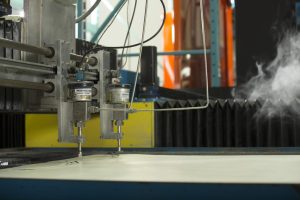Image source: collective-evolution.com
Doug Sharpe
President of Elasto Proxy
This is a picture of a woman wearing a bicycle helmet. The collar around her neck may look like a scarf, but it’s actually an airbag. If she falls from her bike, an inflatable helmet will deploy and provide shock absorption. The pressure will remain constant for several seconds, enabling her to withstand multiple head impacts during a cycling accident. After that, the Hövding begins to slowly deflate.
Safety Meets Comfort
Made in Sweeden, the Hövding airbag helmet is a lightweight but tech-heavy alternative to those traditional plastic-and-Styrofoam helmets that many bicyclists accept but dislike. Available on the Web and in some European stores, this innovative protective device is also a YouTube sensation. So how reliable is the Hövding? Are cyclists sacrificing safety for comfort?
The answers to these questions can be found in the sensors and algorithm that enable the Hövding to distinguish safe biking from cycling accidents. Designed by mathematicians, electrical engineers, and airbag experts, the electronics-equipped collar causes the airbag to deploy during a crash – but not if raindrops or leaves fall atop the cyclist’s head.
When inflated, the Hövding’s airbag provides a larger area of head protection than traditional bike helmets. There’s also a “black box” that captures 10-seconds worth of accident data for subsequent analysis and algorithmic improvements. The company would like bicyclists involved in accidents to share their data, but does not actively monitor Hövding usage.
Electronic Components and Rubber Materials
Bicyclists who wear the battery-powered Hövding can recharge the device via USB connections on computers or mobile phone chargers. The battery lasts for about 18 hours, and uses LED lights and an audible alert to signal that power is low. For cyclists who demand not only comfort and safety but also fashion, there’s a selection of colorful shells for the collar.
During an accident, however, even the most fashion-conscious bicyclist will be grateful for the Hövding’s plain-looking but reliable airbag hood. Made of strong nylon fabric, it won’t rip when scraped against the ground. Like traditional bike helmets, however, the Hövding doesn’t offer whole-head protection. To preserve the bicyclist’s field of vision, the face remains exposed.
The hood’s super-strong nylon is important, but so is the gas inflator that fills it with compressed helium. Housed in a holder inside the collar, this gas-filled canister rests on the cyclist’s back for proper weight distribution. Specifications for the canister aren’t listed on-line, but its control valve probably uses an NBR seal that can withstand helium and aging while maintaining proper pressure.
Rubber Seals and the Evolution of the Airbag
Years ago, I toured an airbag factory. As the co-founder and co-owner of a company that provides custom sealing solutions, I remember thinking how even the mixing machines that make airbag collars require inflatable seals. I also remember learning how airbag technology is tailored to an automaker’s specific needs, and how airbags must account for speed and force.
Automotive airbag technology has evolved significantly since airbags first became required safety features. Airbag injuries, especially to children, have sparked both technical advances and regulatory changes. Today, both passenger cars and light-duty trucks are equipped with sensors that cause front airbags to deploy with less force – or not all. Airbag shapes and sizes are different, too.
Hövding’s technology is impressive, but how well will its airbags last over time? Given a choice between using compressed gas or gas-producing chemicals, North American automakers opted for the latter. In addition to space considerations, engineers worried that a compressed gas canister might not remain at pressure for the life of the car. This concern shows why seal selection is so important, and how a rubber seal must meet all of an application’s requirements.
Join the Conversation
Would you wear a Hövding inflatable air helmet on your next bike ride? Do you need sealing solutions that meet demanding requirements for aging and pressure, and that must resist a compressed gas such as helium?
Join the conversation. Look for my post with a link to this blog entry on LinkedIn, Facebook, Google+, and Twitter. Elasto Proxy has pages on all of these social media websites, so all that’s missing is you! We also hope you’ll subscribe to our free e-newsletters, a great source of information delivered right to your email inbox.











